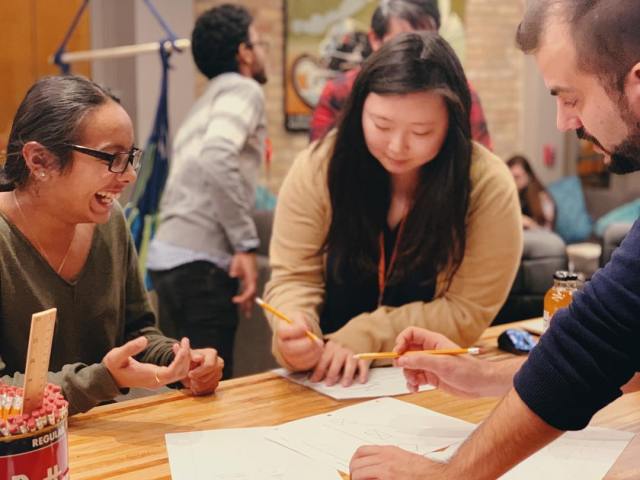
Our inability to perform at a high-level is often a direct result of our environment. Think about how you feel on a rainy day compared to a sunny one, or, in a bright room instead of a room that’s dimly lit. The temperature can even affect you. All of these factors influence our mood, energy, and productivity.
So, if the environment plays such a crucial role, why are we expecting our kids to learn in an environment not conducive to learning?
As it stands, the average American school isn’t set up to optimize student performance. Most classrooms today consist of an inspirational poster or two, a whiteboard at the front of the room, and desks filed in neat rows—similar to the classroom you or I might have sat in 20 years ago.
The design is based on a one-size-fits-all model. A desk, for example, was created with the average student in mind—both physically and emotionally, but what we’ve learned over time is that there is no average student, so why haven’t more schools evolved to include seating arrangements more helpful to today’s learners and teaching styles?
A 2012 study in the U.K. found that classroom design could enhance or setback a student’s academic progress up to 25% during the course of a year.
And it’s not just the classroom that isn’t working. Spaces that we typically dedicate to homework also aren’t ideal. Take a look at your home, for example. There are so many distractions, from phones and television to noise created by siblings. Many home environments are too chaotic to allow a student to concentrate on getting work done.
Since space can either inhibit or improve learning, it would make sense to create environments that give the modern student more flexibility, similar to what we see in learning at the university level or in today’s workforce where many adults choose to work away from their desks.
Here are some examples of other study space solutions for students:
Grab the books and a cup of coffee. The library can be a great space for a student who needs complete silence to learn best. Conversely, a coffee house can be a great option for a student who likes a bit more external stimulus, or a place for small-group studying. With a pair of headphones, it can also be a good environment for tuning out the world and getting into the zone.
Soak up the natural environment. Studies have demonstrated the numerous benefits that come from spending more time in the great outdoors, like improving short-term memory and reducing stress. Many of those benefits can improve a student’s focus and attention. Studying or doing homework outside gives students the opportunity to get fresh air that helps clear their minds, destress, and access their creativity.
Choose a creative co-working space for kids. Most cities offer a variety of after-school spaces for students to do schoolwork among peers, encouraging collaboration. These spaces help cultivate an environment where they can relax, learn, and grow in a positive way. By offering different options, students get to find the best climate for them to work in and thrive where they feel most comfortable.
With the many issues facing education today, creating environments that can promote learning, boost confidence, and produce positive feelings about education can be one of the most cost-effective, easy solutions we can implement to enhance our children’s education.











